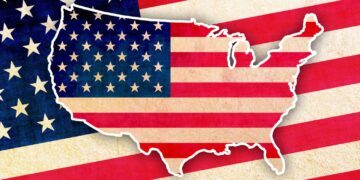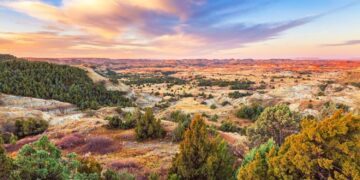Officially nicknamed “The Hawkeye State,” Iowa was the 29th state to join the United States of America on December 28, 1846.
It has a population of 3,155,070 (as of 2019) people, making it the 31st most populous state.
Iowa is bordered by the states of South Dakota, Wisconsin, Illinois, Minnesota, Missouri, and Nebraska.
With 58,272.81 square miles (145,746 square kilometers) of land and water, it is the 26th largest state.
The capital of Iowa is Des Moines, situated smack bang in the middle of the state.
That’s enough fast facts about the Hawkeye State for now, though; we’re here to learn some interesting facts!
The state was named after some of the original inhabitants of the land.

The name Iowa is derived from the name Ioway, which is the name of one of the original tribes who lived in the region before Europeans arrived on the scene.
A few different ideas are floating around as to the origins of the name.
Some say that Iowa is a twist to the French word Ayuhwa, which translates into “sleepy ones.”
It’s claimed that this is the name that the nearby Dakota Sioux tribe used to refer to the Ioway Nation.
Another theory claims that when the Ioway Nation first arrived in the area, they exclaimed “Iowa, Iowa!,” which roughly translates into an exclamation of how beautiful the region is.
The region has been inhabited for at least 13,000 years.
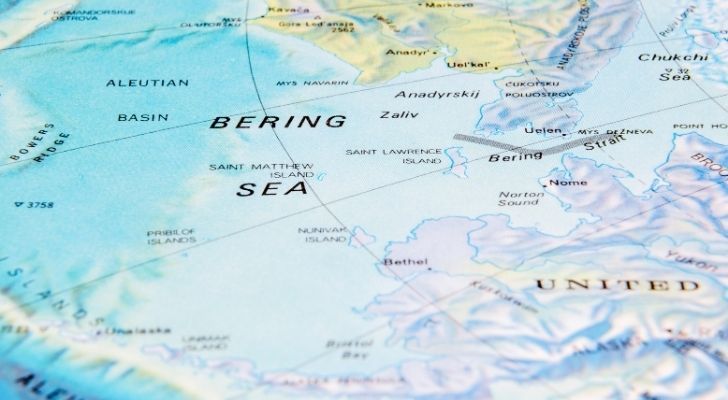
Long before Europeans even considered crossing the oceans to North America, the region of Iowa was already inhabited.
At the end of the Ice Age, prehistoric humans crossed over the Bering Strait from what is now the far east of Russia into Alaska, where they slowly made their way south.
Different groups split up along the way, and some of them settled into modern-day Iowa.
By the time Europeans arrived, there were multiple tribes fully established in the area, living in complex societies and utilizing the land for crops.
Some of these tribes were the Ioway people and the Dakota, Ho-Chunk, Onoeta, and Otoe peoples.
The first Europeans on the scene were the French.
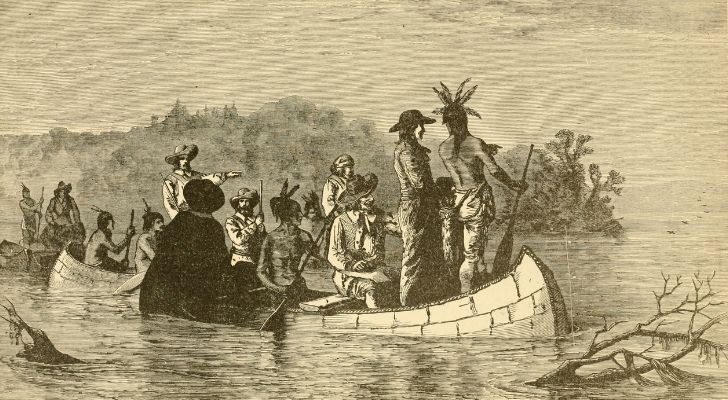
Like many Midwestern states, the first Europeans to explore the region were French missionaries and explorers.
In Iowa’s case, the French Missionary Jacques Marquette and the explorer Louis Jolliet followed the Mississippi River in 1673.
They mapped parts of the region, noting down any Native American villages along the way.
While doing so, they claimed the whole region to be a French territory, and it stayed that way for almost 100 years, until 1763
The state of Iowa was founded almost 200 years after the initial European exploration of the region.
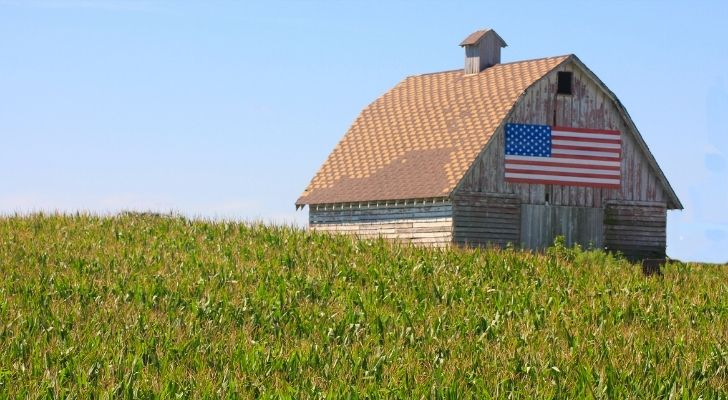
After the French handed control of the Iowa Region (as a part of La Louisiane) to the Spanish, it stayed in Spanish hands until 1800.
France then controlled the region again for just three more years and then sold La Louisiane to the United States in 1803 through the Louisiana Purchase.
Iowa was subsequently made a part of the Indiana Territory.
It wasn’t until 1833 that the first official American settlers moved into the region, with the area gaining status as the Iowa Territory shortly after in 1838.
More and more settlers flocked to the region, and soon a more organized form of governance was required.
To meet demands, the State of Iowa was created on December 28, 1846, making it the 29th US state.
Iowa was a significant contributor to the US Civil War effort.
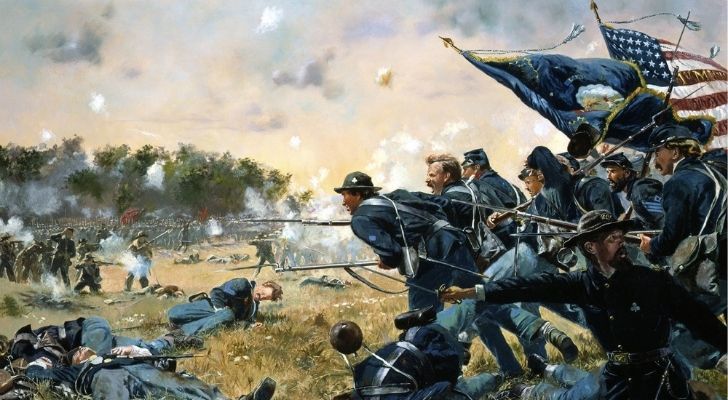
The citizens of Iowa largely supported Abraham Lincoln and thus supported the side of the Union in the war.
In fact, Iowa supported the war so much that almost 20% of citizens were enlisted into military duties.
By the end of the war, over 116,000 men from Iowa played their parts, making Iowa’s contribution larger by proportion than any other state.
There weren’t actually any battles held in Iowa, so the state’s enlisted troops traveled to many of the surrounding areas instead.
Iowa’s population boomed following the end of the Civil War.
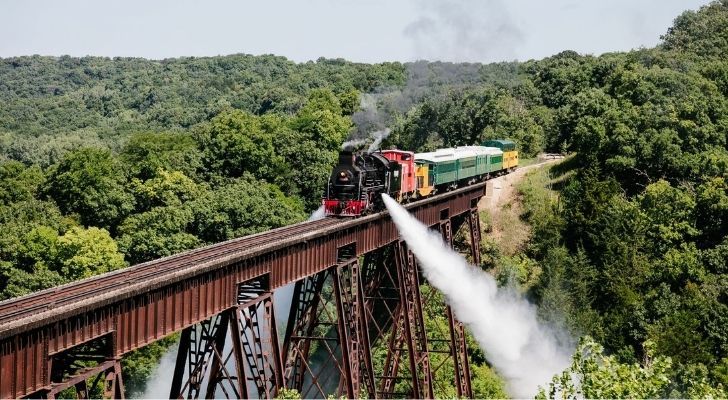
In the 1850s and 1860s, railroads were introduced into the region, significantly increasing the state’s agricultural abilities.
The rapid rise of economic opportunities made the new state of Iowa a highly desirable place to set up a new life.
The population of Iowa more than doubled over the course of 20 years, going from 674,913 residents in 1860 to 1,624,615 by 1880!
Iowa’s role as an agricultural powerhouse grew rapidly, and by the time of World War I, it had grown into the leading industry of farming-related operations.
Both Iowa’s eastern and western borders are formed entirely by rivers.
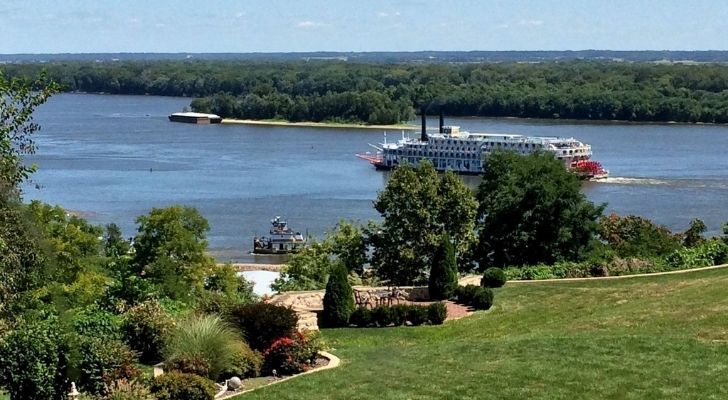
In fact, it’s the only state in the US to claim this! Along Iowa’s east border, we have the Mississippi River, and along the west border, we have both the Missouri River and the Big Sioux River.
Even the Southern border is mainly formed by the Es Moises River.
Iowa’s landscape is vibrant with a surprising amount of diversity, too.
While a large part of the state comprises rolling hills, prairies, and flood plains, it also has quite a few natural lakes and wetlands to the northwest.
Despite being a landlocked state, Iowa has a town situated on an island.
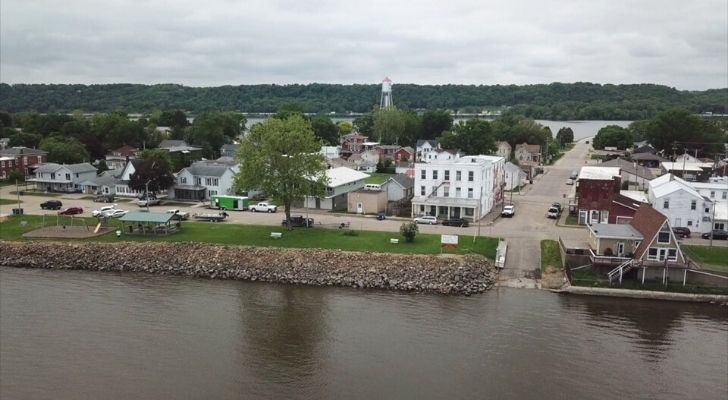
Halfway down the eastern border of Iowa lies the town of Sabula.
What makes this town noteworthy is the fact that it was founded on a sandbar smack bang in the middle of the Mississippi River.
This cute little town has a population of just 576 (2010 census) and is the state’s only island town.
Unsurprisingly, everyday recreational activities for residents and visitors alike are based on the water, whether they’re water sports, boating, or fishing.
Iowa is the largest producer of corn in the United States.
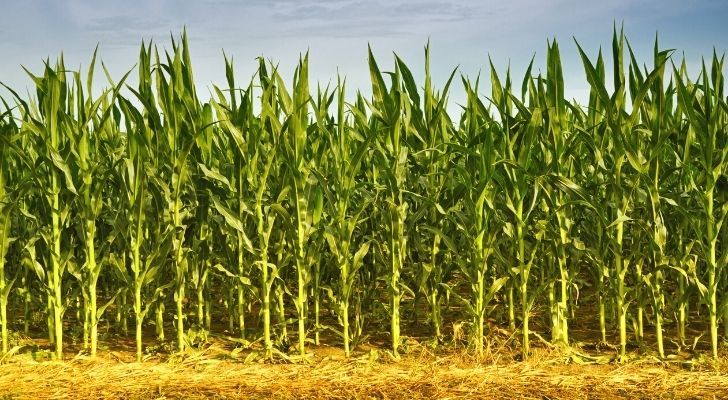
Iowa’s geographical features make it almost the perfect region for farming, and it’s no small state either!
The state is riddled with rivers, creeks, and streams and is covered in highly fertile topsoil.
With these points in mind, it’s no surprise that Iowa is the largest producer of corn.
I’m sure if they put their minds to it, they could be the largest producer of a wide variety of crops!
The vast majority of the corn grown in Iowa isn’t used for human consumption; instead, it’s used to produce ethanol or animal feed.
Humankind’s greatest invention, sliced bread, was created in Iowa.

Sure, it may not officially be the greatest invention of all time, but to many, it’s a pretty great one – and it sure gets a lot of use!
In 1928 a resident of the Iowan town of Davenport called Otto Frederick Rohwedder created a device that would automatically slice a whole loaf of bread.
His machine was an instant success and rapidly spread to all parts of the US.
It really only begs one question – what was the greatest thing before sliced bread?
The US high school system was founded in Iowa.

In the 1910s, Iowa developed a form of secondary school which was recreated in the same fashion all over the state.
This longer and more standardized schooling system began to show precise results, and it became understood that the longer you spent in school, the higher your income would be.
As their popularity grew, schools in the same fashion were established all over the country.
Iowa’s citizens are very well educated, too!

It comes as no surprise considering they established the educational norm that is now practiced across the country.
In 2017 Iowan high schools had a graduation rate of 91.3%, and in 2019 they had the highest graduation rates in the nation.
You would think a state which values its education so highly would appreciate its teachers, but unfortunately, this is not the case.
Iowan state school teachers make just $55,647 on average, ranking their salaries at 22nd out of all US state teacher salaries.
Iowa suffers from a severe case of “brain drain.”

Like many other Midwestern states, Iowa has seen more and more of its population “escape” from rural areas into urban regions or even to other more urban states.
While Iowa has a highly applauded education system, an increasing number of well-educated graduates are leaving the state every year.
Some leave to escape their small town, some for better opportunities, and many go to further their studies.
This is no new trend, either. In the 1990s, Iowa had the highest rate in the US of educated young adults leaving their home state.
Iowa is home to the largest bike-touring event in the world.

Since 1973, the Register’s Annual Great Bike Ride Across Iowa (RAGBRAI) has taken place, covering various routes across the state.
The event is sponsored by the Des Moines Register, a local newspaper, and has seen as many as 23,000 participants take part in various legs of the journey in a single year.
Nowadays, the event’s numbers are much more restricted, allowing just 8,500 participants.
Ozzy Ozbourne once chowed down on a live bat on stage in Des Moines.

It’s one of those stories that will never die, as much as Ozzy wishes it never happened.
This unforgettable event happened on January 20, 1982, during a Black Sabbath concert in Des Moines, Iowa.
A local resident called Mark Neal tossed a bat onto the stage, landing near Ozzy Ozbourne.
As the story goes, Ozzy believed the bat to be fake, so while in the spirit of the moment, he scooped it up and took a big bite out of it!
He obviously realized his mistake within seconds and proceeded to the hospital after the show to get the rabies shot.
At surface level, Iowa really doesn’t seem like much more than another Midwestern farming state.
If anything, people see Iowa as THE farming state, but in reality, the state offers so much more!
With its high quality of life, low rates of unemployment, and fantastic schooling system, the only thing you’re in danger of in Iowa is getting just a little bit bored.


